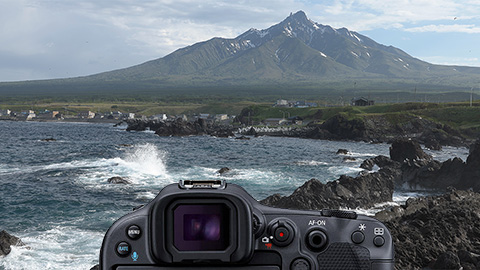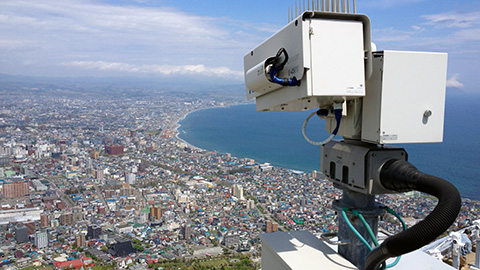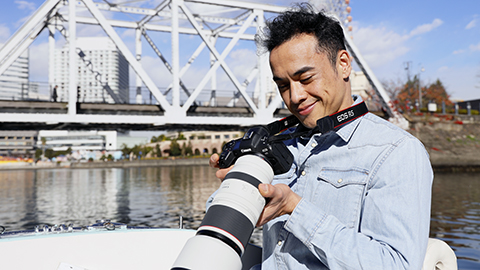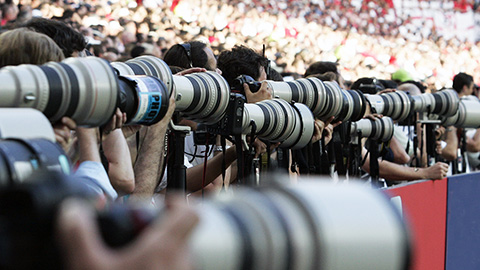Maintaining Trust in the Canon BrandVol.7 An electronic viewfinder that projects subjects as you see them
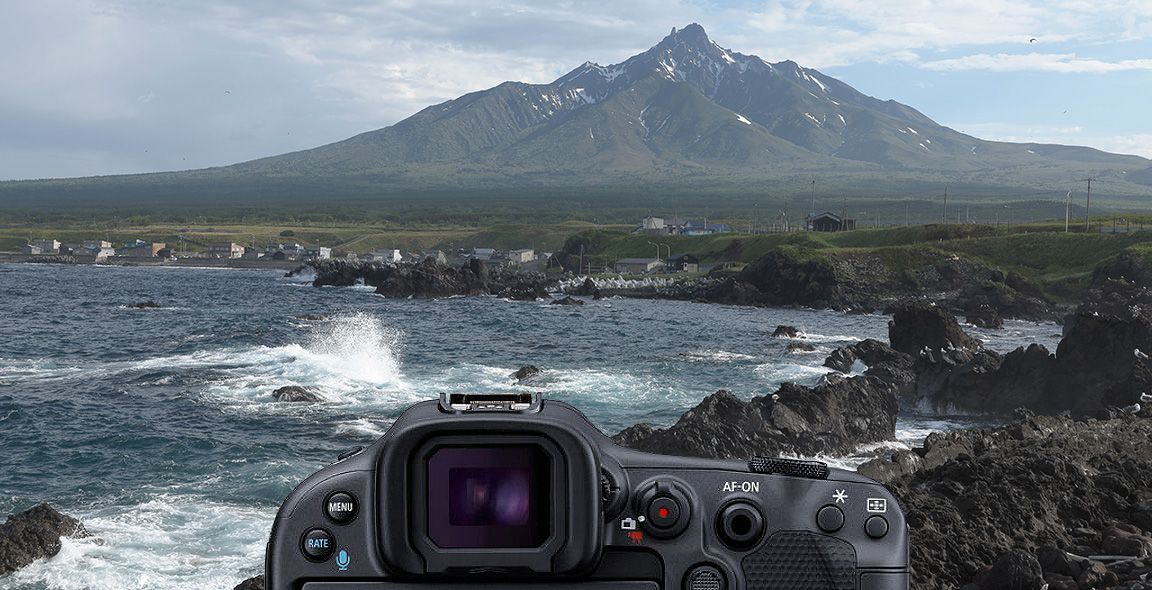
When photographers shoot, they face their subject through the viewfinder, checking the composition of the photo and accuracy of the focus.
Looking into the viewfinder, they press the shutter as they imagine what the resulting photo will look like. For photographers, the viewfinder plays a crucial role in determining the quality of their work.
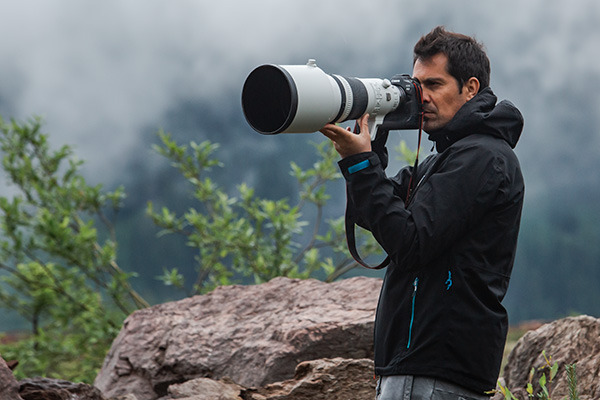
"I can’t fully concentrate on shooting."
DSLR cameras, which have long been popular among photographers of all levels, are equipped with an optical viewfinder (OVF) that allows the colors, brightness, and other scene-related factors visible to the human eye to be displayed without modification.
On the other hand, mirrorless cameras, which have become mainstream in recent years, are equipped with electronic viewfinders (EVFs) that project images with adjusted color and brightness, and, therefore, allow photographers to shoot while checking what the photo will actually look like once captured.
This is a great advantage that only mirrorless cameras can provide. However, photographers have expressed their reservations; "I notice a difference between the subject I see through the viewfinders and what I see with my own eyes," "Contrast and colors are exaggerated compared with what I see with the naked eye" and "The EVF strains my eyes." Canon also began to receive requests from the customers for EVFs to achieve the same look of the subjects as they saw them directly.
The camera, a tool of expression, should not be a burden on photographers who want to immerse themselves in photo shooting. Canon, with its reputation as a manufacturer with a thorough knowledge of cameras, was determined to not make a half-baked product. In pursuit of a viewfinder that perfectly reproduces what human eyes see, the team set about development.


Digitally reproducing human eyes
In order for the EVF to reproduce the visual perception of a human eye, the way an eye perceives natural light and color must be reproduced digitally.
In fact, few EVFs had ever been able to reproduce natural hues.
Although Canon began testing by applying to EVFs its existing expertise in image processing, it was unable to reproduce what the naked eye sees in every possible shooting condition: day and night, front-lit and backlit, sun and rain, in direct sunlight or in shade.
But the development team couldn’t just give up. In order to make Canon’s mirrorless cameras even better, they went back to basics and started over, analyzing how human eyes perceive the color gradations of EVF displays. In their tenacious yet unbiased pursuit, the team discovered a new formula for determining the relationship between the EVF's display of color gradations and the naturalness of human eye perception.
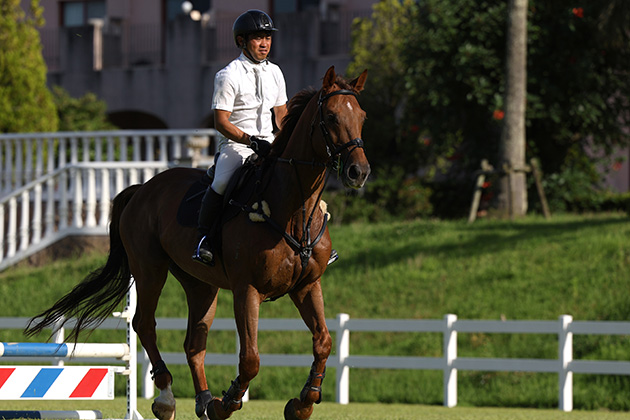
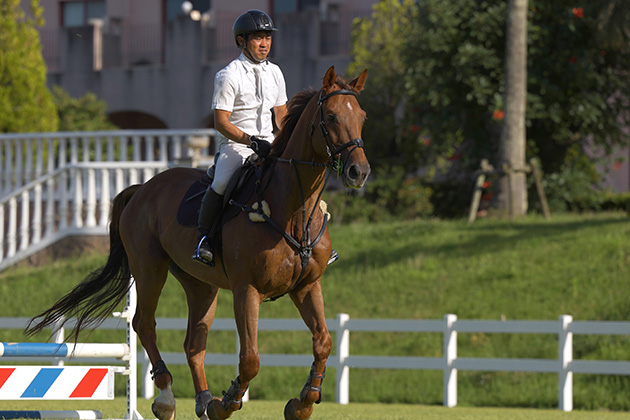
Gradual adaption to brightness like human eyes
In theory, the way people see can be reproduced digitally.
In reality, however, settings need to be adjusted depending on the shooting situation. Aiming for visual reproducibility that everyone will be satisfied with, the team repeatedly tested and fine-tuned the settings for many scenes and subjects, including outdoor scenes on sunny days, cloudy skies and sunsets, indoor and night scenes, lawns and flowers, and people with fair or dark complexions, refining the EVF display function step by step in order to reproduce what the human eye would see in various environments.
In order to provide further natural visual impression, the team designed the viewfinder so that its display gradually brightens when the camera is moved from a dark place to a bright place, similar to how human eyes gradually adapt to changes in brightness.
Expanding the possibilities of mirrorless cameras
And so it was completed—a feature that, when turned on, reproduces what the human eye perceives, and when turned off, previews the resulting image taken, able to be toggled at will by the photographer. That feature, dubbed OVF sim. view assist, was first installed in the EOS R3, released in November 2021. Since then, the EOS R7, EOS R10, and EOS R6 Mark II, all of which were released in 2022, have the function, along with the EOS R8 and EOS R50, which is scheduled for release.
OVF sim. view assist may not be a feature that absolutely everyone needs. That's because it's geared more towards photographers who prefer a natural-looking viewfinder, or who often switch between both mirrorless and DSLR cameras.
However, in the hope of satisfying the needs of all photographers, who want to immerse themselves in photo shooting without stress, Canon will continue to expand the possibilities of mirrorless cameras by introducing features like OVF sim. view assist.




